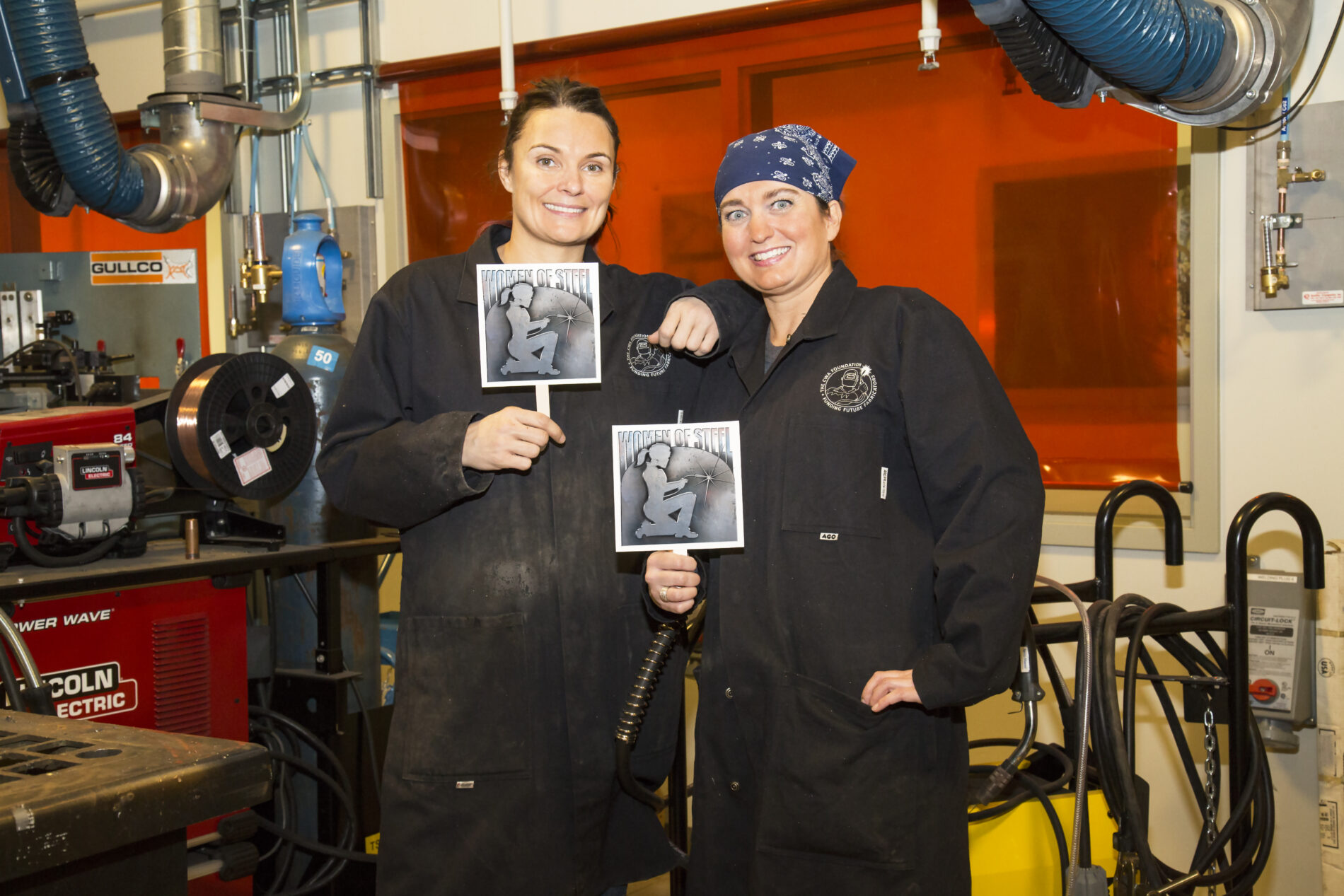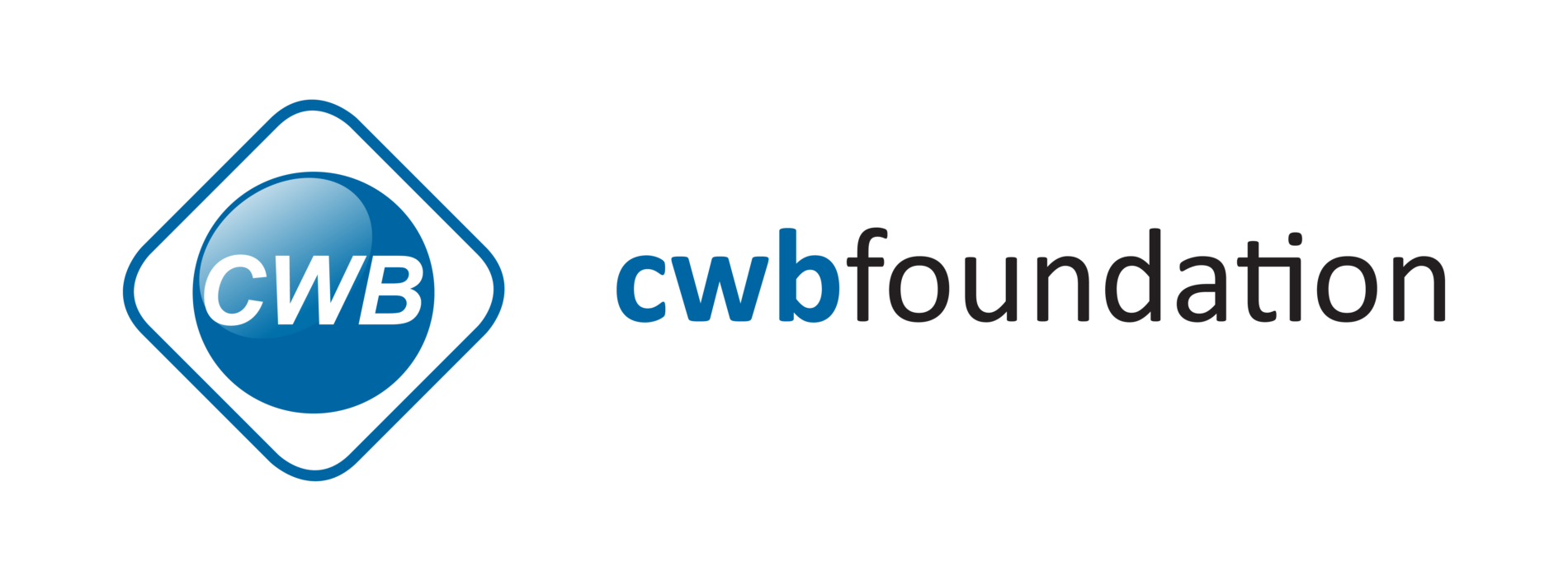
During my 4 years in high school, I took mostly tech classes for my electives. I took welding, manufacturing, automotive, and carpentry. I loved getting my hands dirty and building stuff out of raw materials. I became good friends with some of my classmates in the tech classes whom I am still friends with today!
Without a doubt, the best part was coming home and sharing my ongoing projects with my step-dad who always seem to have the most logical solution to a problem or an even better way to fabricate something. His knowledge and passion for welding and fabricating ultimately led me to decide that I want to devote my life in the welding industry!
My first interaction with welding started in my parents’ garage when I was about 13. My step-dad who was working for AECL at the time, was making a large table and bar for his daughter. He was using square tubing for the frame and legs, and beautiful maple boards for the tabletop. Although I was only watching, his excellent craftmanship and precision became an instant admiration and influenced me to follow in his footsteps.
So far in my program, I have maintained a 3.97 GPA and received a few awards that reflect on my academic success. In May 2021, I received a bursary from Linde for having a minimum average of 70% and being in financial need. I also received the “Andy McCartney Award” for competing in the Skills Ontario Welding Competition. I was able to place 1st in the 2021 Virtual Skills Ontario Competition, which qualified me to compete in the 2021 Virtual Skills Canada Welding Competition where I represented Team Ontario. With all of the hours spent practicing and preparing for the competition, I came 2nd place at the national level. I am very proud of myself for this achievement and more so, grateful for those that supported me the whole way: my coach, Curtis, that showed many little tips and tricks he learned in the field, to Josh, who organized the events and made sure I had everything I needed, and my friend who stayed behind after class to work on my vertical-ups. Most importantly, my parents for supporting whatever it is that I am striving for. Especially, my step-dad for the stories from his career, and his ingenious gadgets and projects that show what true craftsmanship looks like. The Skills event was an unforgettable experience not only because I was successful but because I realized how supportive people in this industry are.
Throughout my short period in the trades and specifically the welding industry, I quickly understood the importance of standards. Welding and construction standards are important because they ensure quality and set clear requirements for the finished product. From one company to another, and from a worker to another worker, there will be different approaches taken on a job. Each little variance in the steps may alter the quality of the final product and jeopardize the safety of the workers and others. Standards reduce the chance of errors that may occur from different procedures and ensure integrity, liability, and safety of the structure. Standards also specify the qualifications required of the welder or other workers to ensure that they have the proper training and experience to successfully complete the job.
Codes and specifications are used to establish the acceptance criteria and ensure that the welded fabrication will perform its intended function. The defects outlined in the acceptance criteria help to determine whether the welds will withstand the designed loads in the service environment. Critical applications often require several documents to ensure weld quality. Common documents include Procedure Qualification Record (PQR), Welding Procedure Specification (WPS), and Welder Performance Qualification (WPQ). A PQR is a record of proving that the procedure developed by a company meets all the testing requirements and is an acceptable procedure that can be followed by qualified personnel. A WPS is like a recipe that outlines all the important details that must be followed to make a satisfactory weld. Material specifications, preheat Post-Weld Heat Treatment, welding equipment, shielding gas, electrodes, travel speed, amperage, voltage range, multi-pass sequencing, along with many other pieces of data are listed in the WPS. A welder must familiarize themselves with the WPS for a weldment and a Welding Inspector must ensure that the welder is following the WPS. WPQ’s qualify welders and certify that they are capable of following the WPS. Welding Inspectors will check if the welders have their tickets and whether they are still valid or needs to be renewed.
Besides ensuring safety of the welded fabrications, codes can also save costs and make the entire process as efficient as possible. Meeting the acceptance criteria and limiting the number of discontinuities requiring repair can save time and money. Making a process “better” than what it has to be results in unnecessary work and increases the total cost of the job. Codes and standards help us define what exactly is “acceptable” depending on the application. If a company were to weld steel structures in Canada, they would most likely refer to CSA Standard W59, Welded Steel Construction (Metal Arc Welding). If the company were to weld the same steel structures in the U.S, they would refer to AWS D1.1 for guidelines on material selection, electrode selection, joint prep, testing methods, etc. If they were to build a steam pipe for a nuclear power plant, they would refer to ASME 31.9 and other documents that would cover piping. These are only a few of many codes that exist in the welding and construction industry. These standards help guide the welders, inspectors, engineers, and other workers to fabricate a safe and reliable product.
I have been able to apply these codes and standards in my current workplace. For the summer, I am working as a welder/fitter at a custom fabrication shop in Brantford to develop new skills and gain experience in the welding industry. I mainly fit up bases that get sent down to the welders for the majority of the welding. I am learning new things every day, whether it is from a mistake I made or advice from my coworkers. Even when things get repetitive, I tell myself that there is always a better way to do things: faster, more efficiently, and more safely. I am always challenging myself to become a better welder/fitter at work.
Previously, I completed a summer co-op in grade 11 at a local tool and die shop called Bowman’s for two months. I worked beside CNC machinists, tool and die makers, QC inspectors, an Electrical Discharging Machine operator, and most importantly, Billy the funny machinist that made my experience there unforgettable. In the summer following my high school graduation, I worked in the breakout section at Tigercat in Brantford. I helped de-nest laser cut parts which were then taken to the CNC brake presses where I spent the majority of my time.
During the pandemic following my 1st year at Conestoga, I worked for a general contractor out of Brantford. We worked mostly in Hamilton, Ancaster, Burlington, and Toronto. I learned to lay tile, run electrical, plumbing, drywall, install fixtures, lay hardwood, and paint. He was by far the best employer I have ever had. He was flexible with my school schedule and was very understanding. When schoolwork became overwhelming, he was happy to relieve me from employment which allowed me to finish the semester with a great average.
My future career goals are to make a positive impact in the welding industry. I want to learn as much as I can from experts that I meet at each step of my journey. I will use my knowledge to make every job more efficient, faster, and safer wherever I may end up working. Even though I am in the inspection stream of my welding engineering technology program, I find myself attracted to the hands-on part of welding and manufacturing rather than the inspections side of things. I like building things with my hands and the precision it takes to produce something that was once only a drawing. Problem-solving and innovative ideas have always been exciting challenges for me. After graduation, I hope to become a weld tech at a company where I can work with my hands often and find my duties fulfilling and challenging.
